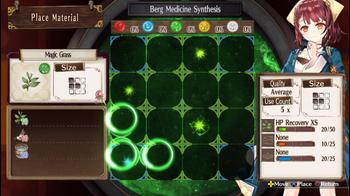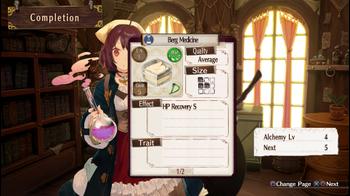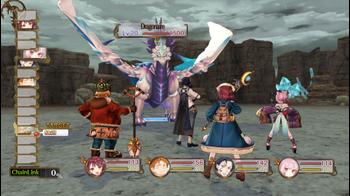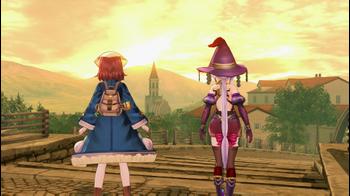
Atelier Sophie: The Alchemist of the Mysterious Book Review
Atelier Sophie represents a jumping-off point for the series as it finally makes its way to the PlayStation 4 after continuing on in the last generation of consoles. Granted, the game was still released on the PlayStation Vita and on the PlayStation 3 in Japan (that version was not localized).
However, with the leap to the latest hardware, we should get a glimpse in what developer Gust is capable of with more horsepower at their disposal. While there is an indication of that happening here, it still falls short of what I would have loved to see. But that isn't to say it was a disappointment.
The story of Atelier Sophie is set in the small town of Kirchen Bell. Sophie is a young girl living alone in an atelier, attempting to make ends meet by creating various things for the townspeople to get by.
Her grandmother was the one her taught her the art of alchemy, but she passed away due to undisclosed reasons. Since she lost her mentor, Sophie has been trying and failing to make any improvement in her abilities.
In the middle of cooking up another recipe, Sophie comes across a mysterious book sitting on the table near her cauldron. After noticing the book only had a few marked pages of different alchemical recipes, she proceeds to fill in one of the blank pages only to witness the book coming alive, flapping around in the air, and speaking to her!
We soon learn this book’s name is Plachta who is suffering from amnesia. By filling out the book with new recipes she learns over the course of the game, a little bit of Plachta’s memories return. Sophie, being the good-hearted girl she is, promises to help Placha restore her thoughts and eventually her human form.
Atelier Sophie does little to break away from the conventions of the series. With Kirchen Bell acting as a hub town for different activities, Sophie is free to perform alchemy in her atelier; chat with the townspeople; and go on adventures with her friends to collect new materials while discovering new things along the way.
Just like with Atelier Shallie, there is no time management required here - players are free to spend as much time as they want without worrying about hitting a deadline. I still maintain there was something appealing about having to take everything one step at a time, but I understand it wasn’t to everyone’s liking especially if Gust is trying to court a wider audience.
I will mention that whoever worked on the localization did an excellent job. I had a lot of qualms with the way Ar nosurge and Atelier Shallie turned out (some of it due to Gust's sometimes confusing game design), but here, I never encountered any noticeable typos, bugs, glitches - nothing like that. Ability points actually work without freezing the game, something Atelier Shallie suffered from. Well done, localization team!
There are some new things worth mentioning. Each key character in the game has a friendship level. Increasing this level requires either having that character be a part of the active party in combat or by giving them gifts whenever you see them around town. Not every key character will be playable; some are just townspeople in which the latter method will be vital to raising levels with them.
Every character has their own likes and dislikes for the items they receive, which can influence not only the rate at which their level grows, but also the gifts they bring to you in return.
This also unlocks special cutscenes and exploration events which do a fantastic job in terms of character development. I enjoyed getting to know these likeable characters in ways a static plotline would not have been able to.
The alchemy system has also received some important changes. This will be a little difficult to explain, but I will try my best.
Anyone who has played the recent Atelier games are already familiar with how most of this works. After gathering different materials from town, out in the field, or during combat, each item is sorted by categories to be used towards recipes. These materials come with various traits, including buffs to one’s stats or increasing its rarity to increase its sell value.
What is different here is each item also has its own base color - red, yellow, green, blue, and white. After choosing which items you want to use in a recipe, a grid appears, and the game introduces its puzzle-based alchemy system.
Kind of like the inventory management in Resident Evil 4, each item takes up a certain number of spots to form a shape, and players will have to figure out a way to fit them on to this grid.
Let’s go back to the color scheme I mentioned earlier. Now, when you first see the grid, some of the squares are color coded, and may also show a shining crystal of a certain color. This means if you lay an item of the matching color down, it gives that item a boost.
Every time an item of a certain color is placed down, any adjacent squares of that color get a boost to its effects. Essentially, you want to fit as many items of a certain color as close together as possible to maximize the benefits.
On the bottom right (once again, just like in other modern Atelier games), there are three different meters you will need to focus on building up to increase the latent characteristics of the finished product.
So, instead of creating a healing item that can only restore a small amount of health, by focusing on building an item of a certain color and increasing the percentage of points you have earned for this color by completing this puzzle, you can make it a healing item that restores a large amount of health.
The game starts off by giving you a 4x4 grid, but over the course of the game you will create alchemic cauldrons that give you a much bigger space to work with, along with the ability to flip items horizontally and vertically. This does take a lot of the challenge away from the game, but higher level items can still entail a ton of trial and error to fill those meters.
I was a bit frustrated the game will not let you increase the number of items you want to make at a single time. For example, if Monika tells me to make 15 treats for a party being held, I can’t just tell the game to make 15 treats at once.
Instead, I have to go through the entire process of selecting materials and creating a single treat 15 times. It’s bizarre considering earlier games let you choose the quantity you wanted right from the start. It’s incredibly tedious, far more so than what the series is known for.
The combat has also undergone some changes. Instead of filling up a bar to unlock skill points that can trigger support defenses and support attacks by tapping one of the shoulder buttons, you get to decide everything at the start of the round.
Players can either take on an Offense or Defensive stance. By performing attacks or taking damage, a Chain Link bar on the lower right starts to fill up.
Once you reach 100%, Support moves are performed automatically. The only way this can happen though is if two characters of the same stance are next to each other in the turn order represented on the left side of the screen.
I always used either one stance or the other for my entire party for a round and did just fine, so there’s barely any micro-management here. A party member’s turn order depends on a character’s speed and the actions they are performing. Their turn can also be disrupted by the enemy, but certain items work to prevent that.
You can only bring three party members into battle, though you can change your formation whenever you want outside of combat. I still claim Atelier Escha & Logy as the gold standard in terms of battle mechanics.
It allowed you to have a front row and a back row much like in Final Fantasy X, letting party members heal up before throwing them back in. The combat here can be just as exciting though, especially towards the end of the game once party members have unlocked their powerful skills and passive abilities.
When it comes to production, the game does a fantastic job with its visuals. Sure, it’s not that different from Atelier Shallie which only came out a couple years ago. However, I still enjoy the aesthetic inherent to the series and only seemed to improve through recent games like Ar nosurge.
The voice acting for both the Japanese and English voice tracks are excellent. The casting directors did an amazing job in finding people that fit their characters well. Some well-known voice actors make an appearance people familiar with that scene should recognize.
On the Japanese side, you have Yuka Iguchi, Aya Suzaki, and Kenyu Horiuchi; the English side has people like Christine Marie Cabanos and Erica Mendez. I have zero complaints for their performances.
The only knock I can give the game in this department is its soundtrack. Shocking, I know. While this is still miles better than many other titles in the genre, none of them were particularly memorable even in the final boss fight.
There also isn’t a New Game Plus feature to speak of. You’ll unlock an Extra option on the main menu which features an art gallery and sound room, but none of your levels, money, items, or recipes carry over to the next time. Without a time limit, you’ll probably get your fill (and your Platinum Trophy) without any reason to start over.
While the combat and alchemy systems are interesting (along with a detailed encyclopedia), the rest of the game doesn’t do enough to differentiate itself as a new subseries in the Atelier franchise much like what Ayesha did.
Outside of the implementation of its core mechanics, Atelier Sophie represents a small step for the series rather than the leap I was expecting when it arrived on the PlayStation 4. Blame it on their insistence of releasing the game on the PS3 and Vita, but I can’t say I was excited by the outcome.
That said, I am still excited to see where the series goes from here with the potential it has. For now, Atelier Sophie is still an above average experience to be enjoyed for those seeking a more casual, light-hearted affair, especially the fans of the series.





